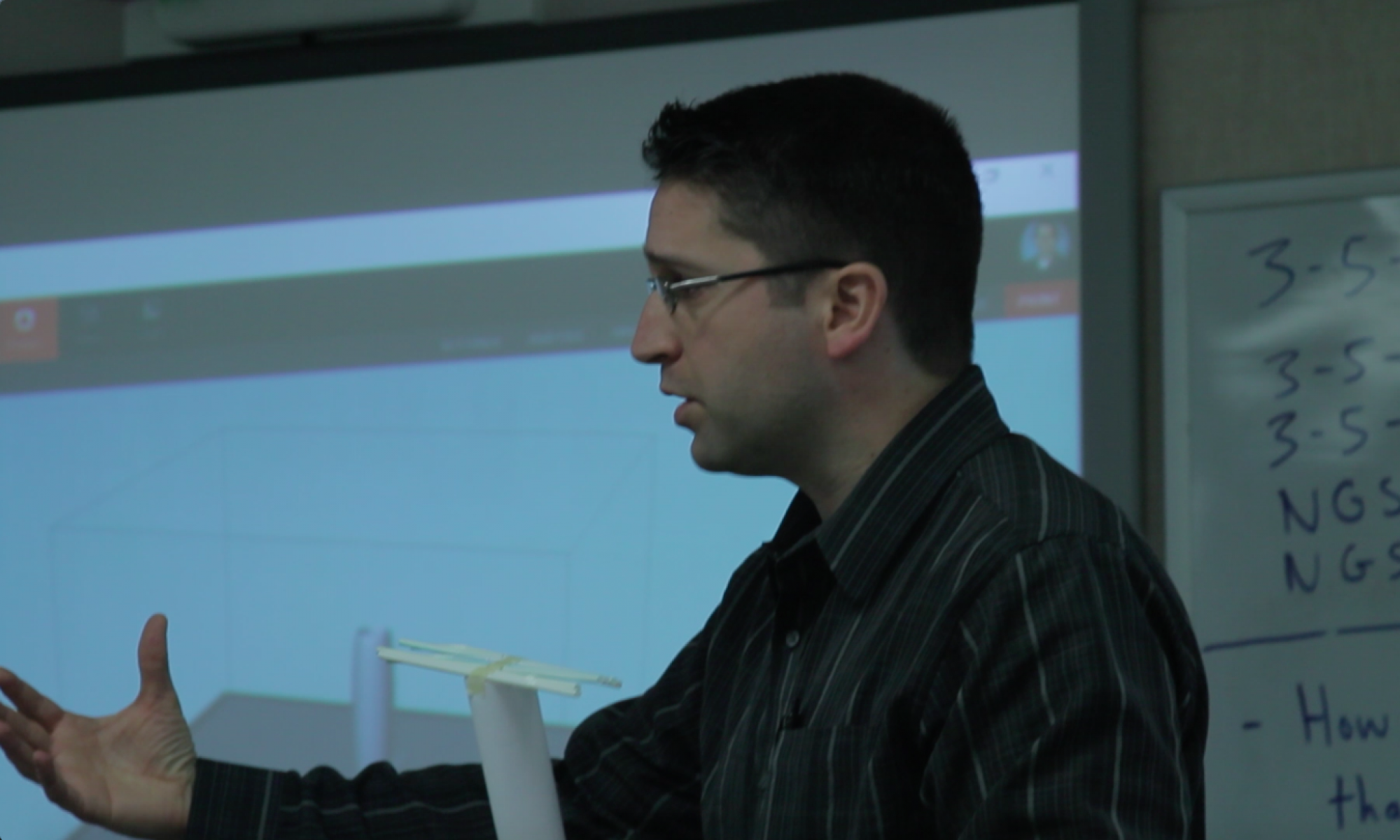
Introductory Section
One of the earliest definitions for Open Education Resource (OER) comes from the UNESCO 2002 Forum on Open Courseware: “teaching, learning, and research materials in any medium, digital or otherwise, that reside in the public domain or have been released under an open license that permits no-cost access, use, adaptation, and redistribution by others with no or limited restrictions.” Knowing early thinking around OER helps to understand how the concept has grown and developed over the years with the evolution of the Information Age. Where open source as an idea facilitated largely by technology meets education can be confusing, however, it can also be clarified by looking through the lens of educational technology standards.
International Society for Technology in Education (ISTE) Educator Standard 6
Facilitator: Educators facilitate learning with technology to support student achievement of the ISTE Standards for Students. Educators:
- 6a. Foster a culture where students take ownership of their learning goals and outcomes in both independent and group settings.
- 6b. Manage the use of technology and student learning strategies in digital platforms, virtual environments, hands-on makerspaces or in the field.
- 6c. Create learning opportunities that challenge students to use a design process and computational thinking to innovate and solve problems.
- 6d. Model and nurture creativity and creative expression to communicate ideas, knowledge or connections.
ISTE Educator Standard 6 describes how educators can facilitate learning with technology by managing use in regard to student learning strategies in digital platforms and virtual environments. There is a strong connection between this standards language and utilizing an Open Education Resource. Online OERs provide accessible digital content for students in a virtual environment that teachers can scaffold, adapt, and leverage for both classwide and individualized learning.
Essential Question
How can educators manage the use of technology and pedagogical practices in digital platforms and virtual environments in such a way that facilitates student engagement and learning?
Learning Strategies and Digital Platforms
Leveraging ISTE standards with Open Education Resources helps answer some of the questions around management of technology and digital pedagogical practices in regard to student engagement and learning. There are a wide range of OERs online. Some OERs serve as an entire curriculum unto themselves. EngageNY is one of the most widely known examples and was created in response to the lack of curriculum supporting Common Core State Standards. Another gold standard in this area is YouCubed which is technically a MOOC (Massive Open Online Curriculum). YouCubed provides curriculum with videos that essentially form self-contained courses. As one can imagine, adopting an entire curriculum is not realistic for most contexts so educators may be more interested in utilizing collections of individual lessons that they can search, adapt, modify, and customize for their educational contexts.
OER Lesson Libraries
While EngageNY and YouCubed function as relatively quality one-size fits all curriculum, other OERs function as searchable online lesson libraries that allow teachers to mix and match per their context. The advantage is flexibility but the disadvantage is the time required to search through what’s available. Gauging quality within and across these types of OERs is also a challenge because there may be multiple authors, limited rating and feedback mechanisms, and a variety of lesson templates among other things. Edutopia speaks to this aspect in a 2015 article entitled “Open Educational Resources (OER): Resource Roundup” and suggests utilizing an OER rubric tool developed by Achieve. Ultimately, each educator is the best judge of what meets the unique and specific needs of his or her educational context. Based on my experience and research, the OERs below are good places to start in order to build familiarity and to begin to learn what’s out there.
Curriki: This is a collection of lessons and units across content areas. Curriki has a five-star rating system and a strong history as it’s been operating as an award-winning OER since 2007. Curriki also offers wide-variety of resources across content areas. Curriki also has arguably one of the largest collections of open-source curriculum online.
Better Lesson: Backed by both the National Education Association and the Gates Foundation (a rare combination), Better Lesson certainly warrants a visit. More recently, Better Lesson has started focusing on how to promote peer coaching but the resource did start out as an OER focused on providing national standards-based lessons.
OER Commons: OER Commons is a platform for organizations to create and share their own Open Education Resource. The advantage is that look, feel, and navigation are more consistent from one resource to another and there’s an entire collection of OERs all in one spot. Many states have started to utilize this resource with Washington State launching an OER here in response to various educational needs created by the current pandemic and quarantine.
Polyup and Cue US Challenge: Polyup is a website that utilizes Reverse Polish Notation to gamify mathematics by removing order of operations (PEMDAS) and focusing on the process as opposed to the answer. Polyup has partnered with CUE and November Learning among others to create an OER library of standards-based math lesson activities for grades 1-8. Polyup is working toward K-12 support and in the meantime is providing a US Challenge with prizes for teams/classes that earn enough “math points” collectively by not just solving problems but also creating content for others.
Learning Keeps Going: Learning Keeps Going is an an OER created in direct response to the current pandemic and quarantine circumstances. The resource has powerhouse sponsor organizations in the form of ISTE, EdSurge, Digital Promise, Education Week, and several others. Learning Keeps Going is more of a curiation OER highlighting and sorting resources available for educators in response to COVID-19 as a one-stop shop. The sheer volume of everything out there is overwhelming so having a searchable library like this can be helpful. Learning Keeps Going lists materials, resources, and OERs (including the next example on the list).
AVID Open Access: AVID Open Access (AOA) emphasizes quality over quantity as an OER resource. It’s not meant to be a one-stop shop but one of several quality options for teachers where they know that what they find will be high quality. AVID Open Access focuses on virtual teaching and student resources for online learning as well as STEM lessons and activities. Partner organizations include MIT, Wonder Workshop, Blue Origin, Microsoft, Engineering is Elementary, and more added every week! Full disclosure: as the author of this blog, I am also working on and supporting AOA so there is some implicit bias due to my involvement.
Other Well-Known Examples: There are far too many examples to list and searching through all that’s out there can be a little overwhelming. Some additional examples that may be more well-known as well as more niche include the following: Khan Academy, TED Ed, PhET Science and Math Simulations, Wikipedia, the Micro:bit Foundation, and much more!
Beyond a Basic Introduction
While OERs have a 20+ year history in education, the recent pandemic conditions have created resurgence of both interest and creation of content in this space. The dramatic increase of materials available at no cost to classroom teachers means more quality educational content but also more materials to sort through. Educators will need help, time, and support in navigating these resources so curation done at all levels will greatly assist and improve the ability to leverage the increased number of OERs and their expanded libraries. School administrators, government education officials and policy makers, and non-government education organizations would all do well to keep this in mind as we seek to support all teachers as best we can in meeting all students’ needs. Some ideas related to this can be found in the post, Open Education Resources in Action, which builds on the “what” of OER found in this post to look more closely at the “How” of using OERs.
References
- International Society for Technology in Education. (2019). ISTE Standards For Educators. ISTE. Retrieved from https://www.iste.org/standards/for-educators
- Edutopia. (2015, December 4). Open Educational Resources (OER): Resource Roundup. Edutopia (George Lucas Foundation). Retrieved from https://www.edutopia.org/open-educational-resources-guide
- Vega, V. (2011, August 30). A Primer on Curriculum-Sharing Sites. Edutopia (George Lucas Foundation). Retrieved from https://www.edutopia.org/blog/curriculum-sharing-sites-Vanessa-vega
- Sparks, S. D. (2017, April 12). Open Educational Resources (OER): Overview and Definition. Education Week. Retrieved from https://www.edweek.org/ew/issues/open-educational-resources-OER/index.html
- UNESCO. (2020, January 4). Launch of the UNESCO Dynamic Coalition for Open Education Resources (OER). UNESCO (United Nations). Retrieved from https://en.unesco.org/news/launch-unesco-dynamic-coalition-open-education-resources-oer
